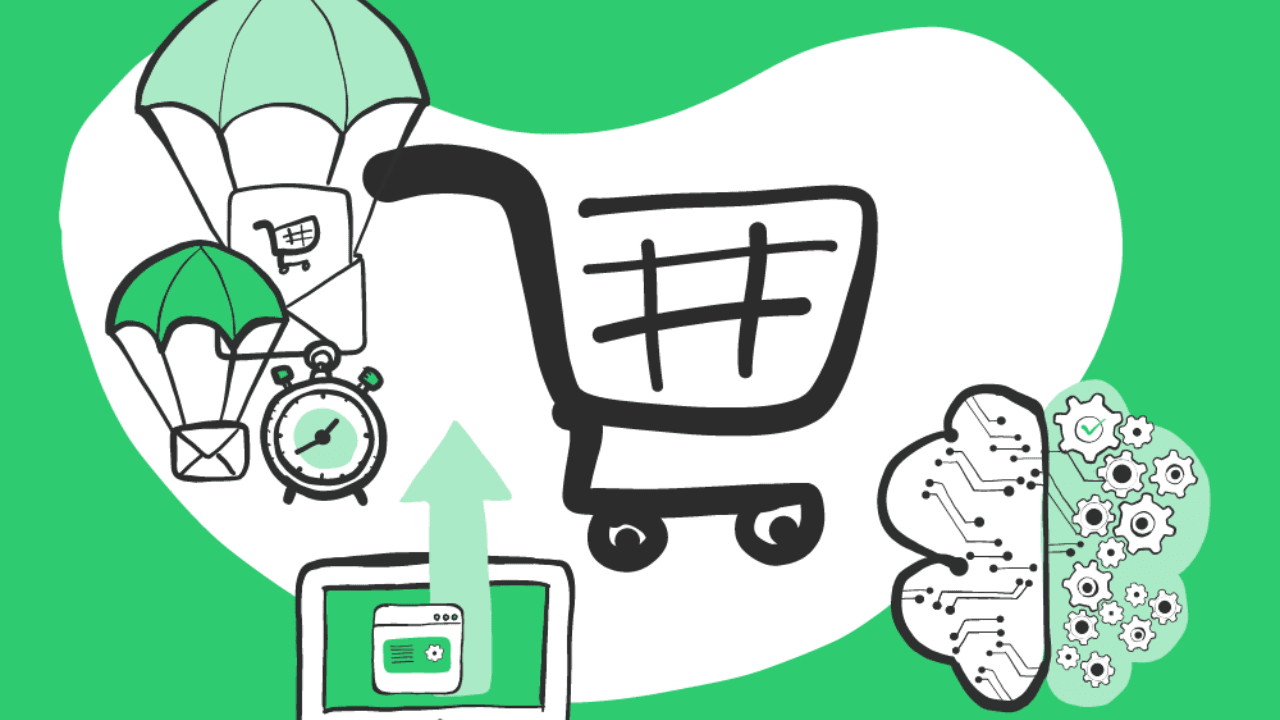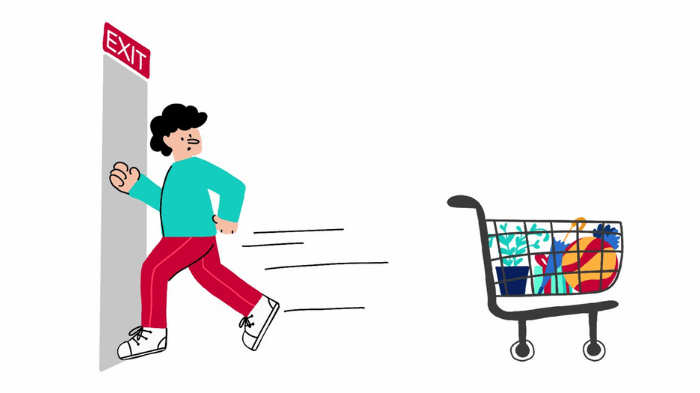Shopify is among the top e-commerce platforms, enabling businesses of every size to build online stores. With over 26% of the overall market share, Shopify is widely considered the most used platform. Despite this much usage and staying trendy among users who build Shopify stores, cart abandonment is one of the issues businesses always face.
Shopify cart abandonment directly impacts your revenue. Hence, a solution must be implemented with precision. Off-the-shelf solutions are not the only way to eliminate this increasing checkout abandonment issue. These can serve as a viable option, but not a potent one. Now, you must be curious to know the option that can aid you in reducing this increasing issue.
What to consider? Custom web development is the way to go. Fixing checkout issues with custom development on Shopify can significantly enhance retention rates and reduce bounce and cart abandonment rates. Businesses have performed this and seen positive results. The subtle nuance lies in the expertise, so ensure you tick this box.
This blog highlights how custom development on Shopify helps reduce Shopify cart abandonment. Continue reading this blog to know more.
I. What Is Shopify Cart Abandonment?
Shopify cart abandonment refers to the situation where a customer adds one or more products to their cart but exits the store before completing the purchase. This is a common occurrence in eCommerce and represents a significant challenge for online retailers.
While the customer may have shown strong purchase intent, various factors can interrupt the conversion process, including unexpected shipping costs, complex checkout procedures, limited payment options, or lack of trust in the store’s security. According to recent data, the average cart abandonment rate across eCommerce platforms hovers around 70%, meaning that for every 10 potential sales, only 3 are completed.
 For Shopify merchants, reducing cart abandonment is crucial for maximizing revenue, improving customer experience, and increasing return on ad spend (ROAS).
For Shopify merchants, reducing cart abandonment is crucial for maximizing revenue, improving customer experience, and increasing return on ad spend (ROAS).
II. What Are Custom Checkout Flows?
Custom checkout flows refer to personalized or optimized versions of the default Shopify checkout process, designed to reduce friction and improve conversion rates. Instead of using a one-size-fits-all approach, a custom checkout flow allows store owners to tailor the customer journey based on their brand identity, user behavior, and target audience.
These customized flows can include:
-
A simplified layout with fewer steps
-
Mobile-first design enhancements
-
Dynamic shipping or payment logic
-
Pre-filled customer information
-
Integrated upsell and cross-sell offers
-
Trust badges and real-time support elements
While Shopify Plus users can leverage Checkout Extensibility to build native customizations, merchants on other plans can achieve similar results through custom web development, using apps, APIs, and front-end scripting.
By adapting the checkout experience to your customers’ needs, custom checkout flows help reduce drop-offs, speed up the buying process, and improve overall satisfaction—ultimately leading to higher conversion rates.
III. How Custom Checkout Flows Fix Shopify Cart Abandonment?
Pre-built solutions are not always the best choice, and fixing major issues like checkout issues with them can sometimes negatively impact your business’s market appeal. The potent solution here can be building a custom solution that can improve the checkout process and positively fill the negative gaps by fueling the innovation. Here are some key strategies that can be followed with custom checkout flows to reduce Shopify cart abandonment:
1. Checkout Simplification
Too many pages included in the checkout process are ideally correct. These create friction among potential users, and they end up abandoning their cart. Fixing this issue has become one of the important ones for a business aiming to increase conversions. Custom strategies involve simplifying the complex checkout process. Ideally, a single-page checkout that contains key steps is the advisable step a Shopify-specific business can take. Plus, including auto-fill options can speed up the process. Moreover, one more thing: do not let users create a specific account to complete the checkout process; instead, let them use just the one they have signed in to your store.
2. Offer Multiple Payment Options

Stricting with a few payment options is also one of the main reasons for the majority of Shopify cart abandonment. A custom approach can fix this. But you might be thinking, how? You can simply add a plethora of options and see massive growth. The answer is no. You need a structured approach, and with the custom mode of development, you get one. Shopify developers can curate custom code like this that depends on specific country payment gateways, which will be showcased. Now, how does this aid in the growth? Instead of showing a plethora of options, you showcase the options that the user is looking for in a specific region/country by assessing data and doing the right custom coding.
3. Better Mobile Optimization
Not staying true to the small screen sizes as an online store owner can be hurtful for you. Because the majority of users utilize mobile phones to perform activities on an eCommerce site, such as:
- Window shopping
- Product’s assessment
- Adding products to the cart
- Completing or discarding a cart
After making your Shopify site compatible with mobile devices, ensure that the custom approach is also focused on simplifying the checkout process for mobile devices. A custom strategy that can work best for your business is implementing simple navigation, large buttons, and easy-to-fill-out forms, which will keep users from abandoning their cart.
4. Leverage Exit-Intent Popups
Exit pop-up content can be bad or a gold mine for your business. The magic lies in how smartly these can be used. A custom approach should revolve around the triggering of exit-intent popups that offer discounts, free shipping, or other incentives when the customer is about to leave the checkout page. Utilize it wisely with innovative offers that trigger users to complete the purchase.
5. Custom Shipping Options
Sometimes, the unavailability of shipping costs can also trigger a user to leave an ecommerce site without making a purchase. Hence, including a custom shipping cost calculator on your Shopify store is one of the approaches that you can follow to reduce the cart abandonment ratio. Customizing shipping options, such as offering free or expedited shipping at certain thresholds, can incentivize your potential users to follow through.
Conclusion
Shopify is one of the most popular eCommerce store development platforms. Due to its outstanding features, most businesses globally use it. Despite the platform's many uses and advantages, the cart abandonment issue remains a question that requires a viable answer. Instead of just plugging and playing with off-the-shelf solutions, infusing a custom approach into the Shopify checkout can significantly reduce this issue. However, work with the right Shopify development partner because custom web development over this platform requires hands-on working experience. Invest your time, money, and effort wisely to overcome this significant issue.
